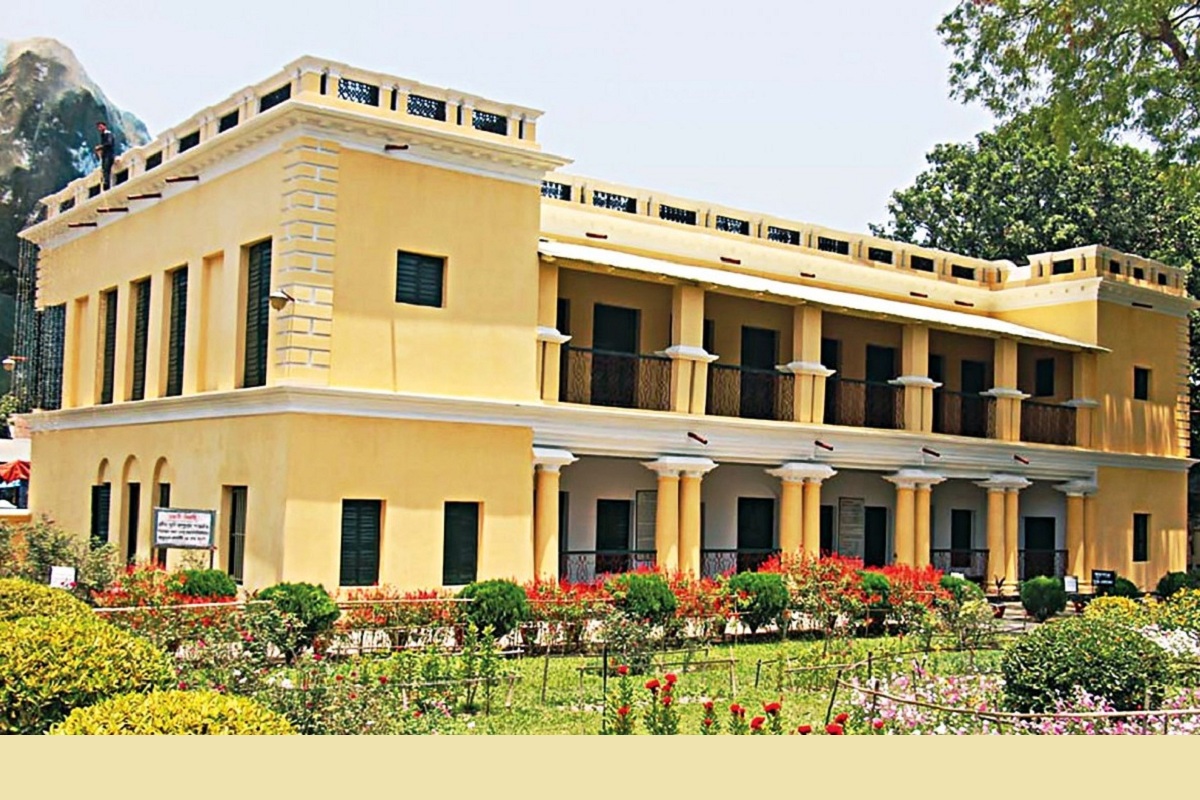Bangladeshi passenger dies in Maitree Express
A Bangladeshi passenger fell ill and died after boarding the Maitree Express on his way home.
“We have submitted proposals to the Department of Archaeology for repairing the dilapidated building of historic Kacharibari and a technical team of the department visited the spot. After getting expert’s opinion, we will go for repairing it,” said Md Jayed Hossain, custodian of Shahzadpur Rabindra Kacharibari.

(Photo: Ahmed Humayun Kabir Topu)
A building of the historic Rabindra Kacharibari, from where Rabindranath Tagore supervised his family estate in Sirajganj’s Shahzadpur upazila in Bangladesh, lies in an awfully dilapidated condition, giving a striking contrast to the well maintained and decorated mansion of the great literary genius on the same premises.
The mansion now houses a memorial museum named after the Nobel Laureate. With a newly built auditorium building and a beautiful garden, the famous heritage site attracts a good number of visitors.
“Rabindranath Tagore came to Shahzadpur for supervision of his family’s estate and he fell in love with the nature and people of the area,” said Prof Dr Abdul Alim, former chairman of Bangla department of Pabna University of Science and Technology. Tagore’s grandfather Prince Dwarkanath bought the estate in Shahzadpur from Zaminder Rani Bhabani of Natore in 1840, long before the poet’s birth.
Advertisement
After getting the responsibility to maintain the estate, Tagore visited Shahzadpur several time and stayed at the mansion of the Kacharibari for years in phases.
“Tagore, the landlord, often met the tenants of his estate at the kachari (revenue office) and gave patient hearing to them about their sorrows and problems. Many of his writings have the reflection of his experiences while dealing with the people in this area,” Dr Alim said.
After hearing about the local cattle farmers’ problem due to lack of sufficient grazing fields, Tagore arranged for them a large grass field in his estate and the area eventually developed into the country’s biggest dairy hub centring in Baghabari, Shahzadpur.
Tagore undertook several other welfare programmes for the people in his estate, said researchers.
“Here (Shahzadpur) I get inspiration for writing,” Tagore wrote in a letter to his niece Indira Debi in early twentieth century. Tagore wrote parts of his literary creations Bishorjon, Sonar Tori, Chitra, Chaitali, Golapguchchho, Chhinnapatra, Panchabhooter Diary and Meyeli Chharain Shahzadpur. Thirty-eight letters written by Tagore from here have survived.
“The historic house of the great poet in Sirajganj’s Shahzadpur heritage site has been preserved as an archaeological structure and it is well maintained, but another important part of the site comprising the kachari lies virtually abandoned,” said journalist Habibur Rahman Swapon, also a researcher on Tagore.
Visiting the site, this correspondent saw cracks in different parts of the neglected building while its doors and windows got damaged long ago. “We have submitted proposals to the Department of Archaeology for repairing the dilapidated building of historic Kacharibari and a technical team of the department visited the spot.
After getting expert’s opinion, we will go for repairing it,” said Md Jayed Hossain, custodian of Shahzadpur Rabindra Kacharibari.
“There are 331 artefacts and memorabilia in Shahzadpur Kacharibari museum. Those include 148 items used by the poet, including a couch, chairs, tables, a mirror, a piano, a palanquin and other materials. Many other items went missing in course of time,” Jayed said.
“There are 20 rare paintings of Tagore, including those depicting trees, nature and women, in the museum. Around 3,000 precious books are also kept here,” he added.
Advertisement